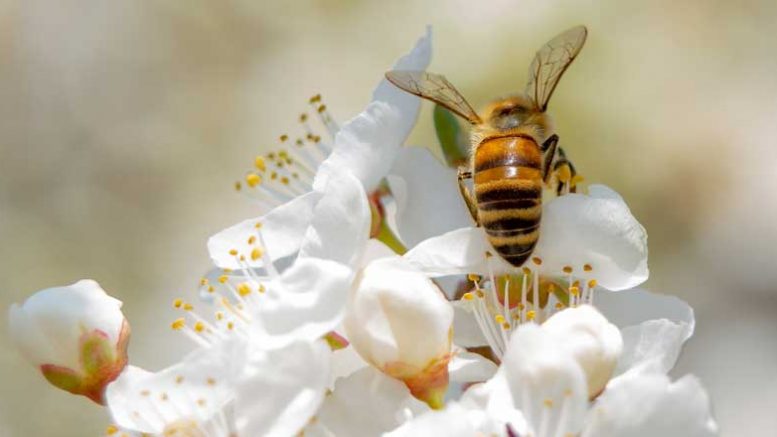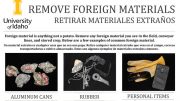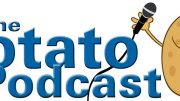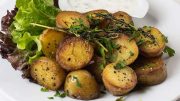|
Click to listen to this article
|
By Mike Thornton, Nora Olsen, and Erik Wenninger
University of Idaho
There has been a lot of discussion lately about pesticides and their impact on honey bees and other pollinators. A superficial look at this information may lead one to conclude that it does not really impact potato producers because potato flowers are wind-pollinated, so few pollinators are expected to be found in potato fields.
However, restrictions on the use of some pesticides, such as seen in Europe and Canada, and decisions by major buyers to source pollinator-friendly produce could eventually have big impacts on how insect pests are controlled in potatoes. This article takes a more in-depth look at this issue and how it might affect the potato industry going forward.
Let’s start by looking at the insecticides most widely used by potato producers in Idaho. The list includes many different commercial products that fall into three major chemical classes (Table 1).
To get an idea of how widely these products are used we can look at information collated in the NASS Pesticide Use Survey from 2016 (the last time specific data for Idaho potatoes was included). These data indicate that 67% of the acres were treated with the two most common neonicotinoid insecticides – Admire and Cruiser (and several other trade names). The avermectins were also reported to be widely used in this state, with 31% of the acreage treated in 2016. The pyrethroids include a large number of products, and you would have to add up all the different compounds together to get a picture of how commonly this chemical class is applied to potatoes, but they at least rival the neonicotinoid class in extent of use.
These three chemical classes and products have a long history of safe use for insect control in potatoes and have proven to be very effective at reducing damage from the most common pests seen in Idaho. The choice of which products to use in an insect control program has historically been based primarily on efficacy, effects on non-target organisms (including beneficial insects and other insect pests), and cost considerations. Going forward, producers may also need to actively factor in pollinator health considerations that are being advocated by customers.
To understand that last statement it is helpful to look at the use history of the neonicotinoid insecticides. They were approved for use on crops in the US in the mid-1990s and soon became one of the most widely used classes of insecticides in many crops, including potatoes. The discussion about their impact on pollinators started within a few years after widespread adoption, and really caused a stir when the European Union voted to decline to register their use in 2018.
While still approved for use in the US, the concern about pollinator health has led several companies to issue policy statements calling on produce suppliers to reduce or eliminate the use of neonicotinoid insecticides and avoid replacing them with other products that have a similarly high bee toxicity rating. This raises some important issues for potato producers given that all three of the most commonly used chemical classes listed in Table 1 carry a level 1 rating (indicating a relatively high toxicity to honey bees).
Looking through the PNW Insect Management Handbook (available at: https://pnwhandbooks.org/insects) at the insecticides labeled for use in potatoes, we were only able to identify about a dozen active ingredients that do not have a level 1 rating.
We recommend that all potato producers stay informed on this topic as it is not likely to go away. Specific steps to take would include:
Communicate with your customers to see if they have a pollinator health policy.
If your customers are asking you to review your current insect control program to reduce the impact on pollinators, gather information on the bee precaution ratings for each product and consider adjusting application practices to reduce risk to pollinators.
Information on many active ingredients can be found in Extension Bulletin 591 available at: https://catalog.extension.oregonstate.edu/sites/catalog/files/project/pdf/pnw591.pdf.
Bulletin 591 contains a lot of information on ways to protect pollinators that may be useful in showing your customers that you are making efforts to promote pollinator health.
There is also an online tool available from the University of California that allows you to enter trade names to see their bee toxicity rating: https://www2.ipm.ucanr.edu/beeprecaution/.
Table 1. Chemical class, IRAC (Insecticide Resistance Action Committee) mode of action1 group, and trade names of some of the most widely used insecticides in potato production.
| Chemical Class | IRAC Group | Example Trade Names |
| Neonicotinoids | 4A | Actara, Admire, Cruiser, Platinum, many others, and package mixes including Brigadier, Leverage, Endigo, and Voliam Flexi |
| Avermectins | 6 | Agri-Mek, Epi-Mek, Abacus, Reaper, Temprano, Abba, Zoro, and package mixes including Athena |
| Pyrethroids | 3 | Brigade, Baythroid, Warrior, Mustang, Asana, and package mixes including Athena, Brigadier, Hero, Leverage, Endigo, Voliam Flexi |
SOURCE: Idaho Potato Commisssion






